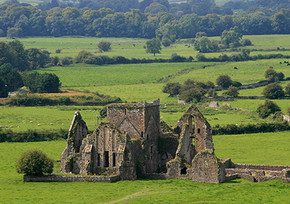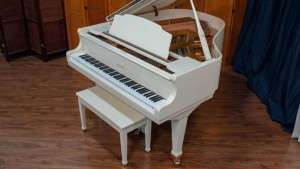
Irish folk music: national musical instruments, dance and vocal genres
Contents
 Irish folk music is an example when a tradition becomes popular, because at this time, both in Ireland itself and abroad, including in the CIS countries, many performers play Irish folk or “Celtic” music with great pleasure .
Irish folk music is an example when a tradition becomes popular, because at this time, both in Ireland itself and abroad, including in the CIS countries, many performers play Irish folk or “Celtic” music with great pleasure .
Of course, it is worth noting that most of the bands play music that is not entirely authentic to the Emerald Isle; for the most part, all compositions are played in a modern style, simply with the inclusion of Irish folk instruments. Let’s look at Irish music, but start with the instruments.
National musical instruments of Ireland
How did the Tinwhistle flute come about?
Tinwistle is a type of flute that owes its appearance to a simple laborer Robert Clarke (a young instrument, but one that managed to gain popularity). He realized that wooden flutes were very expensive and began making instruments from tin coated with tin. The success of Robert’s flutes (called tinwhistles) was so stunning that Robert made a fortune from it, and his invention subsequently received the status of a national instrument.
Fiddle – Irish fiddle
There is an interesting story about how the fiddle, the local equivalent of the violin, appeared in Ireland. One day a ship sailed to the shores of Ireland, and it was loaded with cheap violins, and the Irish people became very interested in inexpensive musical instruments.
The Irish did not fully understand the technique of playing the violin: they didn’t hold it the way they should, and instead of rosining the bow, they rosined the strings. Since people from among the people learned to play on their own, as a result, they developed their own national style of playing, their own ornamentation in music.
Famous Irish harp
The harp is the heraldic symbol and national emblem of Ireland, so the fame that Irish folk music has achieved owes much to the harp. This instrument has long been revered; it was played by a court musician who sat next to the king, and during times of war he rode ahead of the army and raised morale with his music.
Irish bagpipes – an old friend?
Irish bagpipers are sometimes called the “kings of folk music,” and Irish bagpipes are noticeably different from the bagpipes of Western Europe: air is forced into the pipes not by the force of the musician’s lungs, but with the help of special bellows, like on an accordion.
Genres of national music of Ireland
Irish folk music is famous for its amazing songs, that is, vocal genres, and fiery dances.
Dance genres of Irish music
The most famous dance genre is jig (sometimes they say – zhiga, without the initial “d”). In the old days, this word generally referred to just a violin, which some village musician played for the dancing youth. Apparently from that time on, the word jig (or the more common one – jig) became attached to the dance, becoming at the same time its name.
The jig was not always the same – at first it was a pair dance (girls and boys danced), then it acquired humorous features and migrated from the youth to the sailors. The dance became purely masculine, fast and dexterous, sometimes not without rudeness (when they wrote and joked too “jokingly”, rather rudely).
Another popular dance and music genre is ril, which is also played at a fast tempo.
The main means of expression that distinguishes jig music from reel music is the rhythm around which the melody is wrapped. In this respect, the Giga is somewhat akin to the Italian tarantella (due to its clear triplet figures in 6/8 or 9/8), but the reel rhythm is more even, almost devoid of sharpness; this dance is in a bipartite or quadruple time signature.
By the way, if the jig is a dance that arose and was formed among the people over quite a long time (the time of its appearance is unknown), then the reel, on the contrary, is an artificial, invented dance (it was invented around the end of the 18th century, then it became fashionable, well then the Irish could not imagine their life without reel).
In some ways close to rilu is polka – Czech dance, which was brought to the Celtic lands by soldiers and dance teachers. In this genre there is a two-beat meter, like in reel, and rhythm is also important as a basis. But if in reel evenness and continuity of movement are important, then in polka, and you know this very well, in polka we always have clarity and separation (floods).
Vocal genres of Irish folk music
The most favorite vocal genre of the Irish is ballad. This genre is also poetic, because it basically contains a story (epic) about life or about heroes, or, finally, a fairy tale told in verse. Usually such story-songs were performed to the accompaniment of a harp. Isn’t it true that all this is reminiscent of Russian epics with their gulley sounds?
One of the ancient vocal genres in Ireland was shan-nose – very highly ornamented improvisational singing (that is, singing with a large number of chants), where there were several parts of voices from which the overall composition was woven



